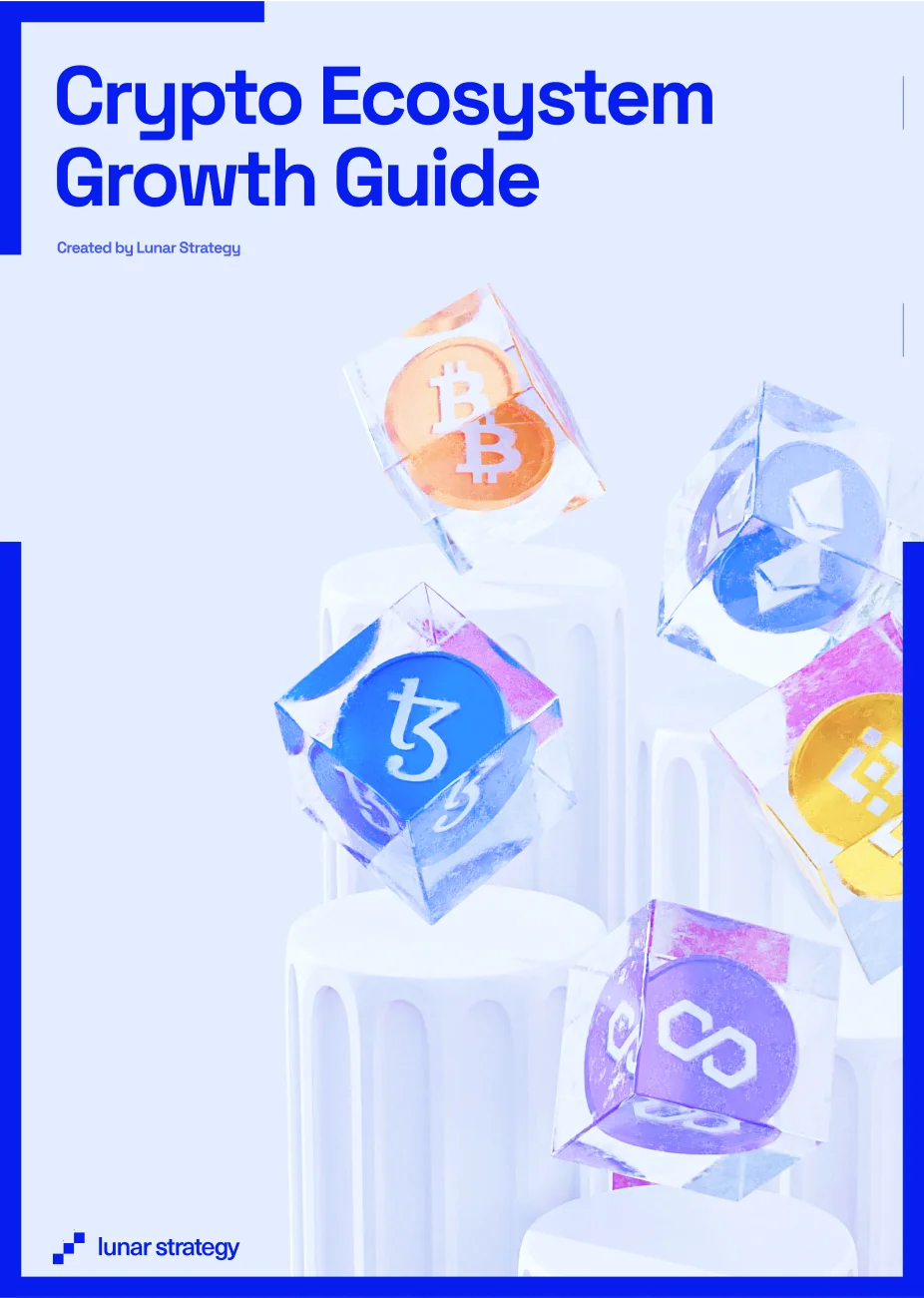Let’s face it: DePIN is the hottest emerging narrative in tech right now, and from a marketing perspective, rightly so. We're drifting from the age of information to the age of computation, and as always, we’re still early in this shift.
Projects and brands in the DePIN sector are heads down the building, and we understand the nuances that come with marketing in such a new and vast industry. If you’ve delved into the GPU rabbit hole even a little, you’re likely aware of the physical limitations, availability issues, and the high costs associated with GPUs. This is where DePIN comes in.
But, "what does DePIN stand for?", you ask? DePIN stands for Decentralized Physical Infrastructure Networks, a term coined by Messari in November 2022 after conducting a poll on X (formerly Twitter). DePIN helps solve the problem of high costs and limited availability of GPUs by using decentralized networks to share and manage computing power efficiently.
It is basically a system that uses blockchain and crypto rewards to create and run real-world infrastructure (like GPU servers) in a decentralized way. As Elon Musk puts it, “GPUs are at this point considerably harder to get than drugs,” and according to Sam Altman, “Computing power will be the currency of the future.”
This makes DePIN and its marketing essential for projects, as it addresses critical challenges in technology infrastructure while promoting a more efficient and decentralized future. In this guide, we take a deeper look at DePIN and explore some of the strategies that we’ve tested to help push projects forward in the sector.
What Exactly is DePIN?
Traditionally, physical infrastructure such as road networks, water supply, electricity grids, and internet connectivity are owned and operated by governments or large corporations. DePIN projects, however, use the power of communities and token incentives to build and maintain these infrastructures digitally. By decentralizing the ownership and operation of physical networks, DePIN aims to create more resilient, efficient, and accessible systems.
DePIN projects can be classified into six major categories:
- Wireless: Decentralized networks provide wireless connectivity for various devices, enhancing coverage and reducing reliance on centralized telecom providers.
- Compute: Distributed computing power resources, enabling efficient data processing and storage across decentralized networks.
- AI: Leveraging decentralized infrastructure to support AI development and deployment, reducing costs and increasing accessibility.
- Energy: Decentralized systems for energy production, distribution, and management, promoting sustainability and reducing reliance on traditional power grids.
- Sensors: Networks of decentralized sensors collecting and sharing data for various applications, including environmental monitoring and smart cities.
- Services: Decentralized platforms offering various services, such as data storage, cybersecurity, and cloud computing, enhancing efficiency and security.
Some notable examples include nuco.cloud (cloud computing), Helium (wireless connectivity), Render (GPU rendering), Rowan Energy (renewable energy), Privasea (AI + DePIN), and Hivemapper (decentralized mapping).
How Does DePIN Work? Exploring The DePIN Flywheel
At the core of DePIN projects lies the concept of the "flywheel effect," a self-reinforcing cycle that drives the growth and adoption of the network. Think of this as a ‘self-fulfilling prophecy’ with the right conditions being met.
The flywheel effect works as follows:
- Token Incentives: DePIN projects issue tokens (usually as cryptocurrencies) to incentivize users to contribute resources (e.g., hardware, computing power, data) to the network. These tokens can be earned by providing infrastructure (like allowing these projects to use your hardware via cloud), or services and can be used within the ecosystem or traded on exchanges.
- Network Growth: As more users join the network to earn tokens, the infrastructure expands and becomes more robust. This growth enhances the network's coverage, performance, and utility, attracting more users and developers.
- Increased Demand: The improved network capabilities and growing user base lead to increased demand for the project's tokens. This demand can be further amplified by token burn mechanisms or buybacks, which reduce the token supply and drive up the price.
- Higher Token Value: As the token price appreciates, it creates a stronger incentive for users to contribute resources and participate in the network. This, in turn, fuels further network growth and adoption.
- Ecosystem Development: The rising token value and network effects attract developers to build applications and services on top of the DePIN infrastructure. These ecosystem projects create additional demand for the tokens and enhance the overall value proposition of the network.
The flywheel effect propels the growth and sustainability of DePIN projects in the long run. However, it's essential to note that the success of this model depends on various factors, such as the project's architecture, token economics, regulatory compliance, and real-world adoption by communities and people.
Benefits of DePIN
DePIN projects offer several potential benefits over traditional centralized infrastructure systems:
- Decentralization: By distributing the ownership and operation of physical networks among a wide range of participants, DePIN reduces the risk of single points of failure and censorship. This decentralization enhances the resilience and security of the infrastructure.
- Cost Efficiency: DePIN projects can potentially lower the costs of building and maintaining physical networks by leveraging the collective resources of the community. The token incentives encourage users to contribute their hardware and services, reducing the need for large upfront investments.
- Accessibility: DePIN can make infrastructure services more accessible to underserved regions and populations. By incentivizing the deployment of resources in areas that might not be profitable for traditional operators, DePIN can bridge the digital divide and promote inclusivity.
- Innovation: The open and permissionless nature of DePIN encourages innovation and experimentation. Developers can build novel applications and services on top of the decentralized infrastructure, unlocking new use cases and business models.
- Community Empowerment: DePIN projects give communities a stake in the infrastructure they rely on. Through token ownership and governance mechanisms, users can participate in decision-making processes and benefit from the network's growth and success.
While DePIN is still an emerging concept, it holds significant potential to revolutionize how we build, own, and interact with physical infrastructure. As more projects enter the space and the technology matures, we can expect to see increased adoption and real-world impact in the coming years.
Marketing DePIN: How To Build Your DePIN Narrative In 2024
Moving forward, we’ve reached a state of crypto beyond the Bitcoin 2024 halving, a world showing more trust and confidence than ever in crypto and AI. The implications of this new wave of adoption are still to be felt, but we’re in for a great ride. Of all the narratives that have emerged post the 2023 bear market, DePIN is one that has stayed strong and shows significant potential in leading the market with utility.
This is what makes DePIN marketing a unique field to explore and build from. The niche is currently exploding with potential and, from what we’ve learnt, is primed for mass adoption simultaneous with the growth of both, the crypto and the AI industries.
If you’re a project or team working at the frontiers of DePIN, here are a few tips you may find useful in your DePIN marketing journey.
Influencer Marketing for DePIN Growth
Influencer marketing is a powerful tool for promoting DePIN projects. The crypto space is heavily influenced by thought leaders and community figures, making their endorsement invaluable. Here's how to leverage influencer marketing effectively:
- Identify the Right Influencers:
This means diving into deep research and understanding if the influencer(s) have the right knowledge and technical know-how to communicate DePIN in simple and understandable ways to their audience. You will find influencers in three tiers, namely:
- Macro Influencers: These are individuals with 100K to 1 million followers. They offer a good balance between reach and specialization. Their credibility and in-depth project analysis can drive significant traffic and credibility to your DePIN project.
- Mid-tier Influencers: With 50K to 500K followers, mid-tier influencers provide a cost-effective alternative to macro influencers. They offer substantial reach and engagement without the high costs.
- Micro Influencers: These influencers have a smaller but highly engaged audience (10K to 50K followers). They are ideal for niche topics within the DePIN space, fostering a strong sense of community and trust.
- Craft Compelling Campaigns:some text
- Content Briefs: Provide influencers with detailed content briefs to ensure they deliver engaging and accurate messages. Include talking points, key features of your DePIN project, and the benefits to users and investors.
- Call-to-Actions (CTAs): Ensure every piece of content has a clear CTA. This could be signing up for updates, joining a community, or participating in a token sale.
- Use the Lunar Amplification Method:
- Start with a high-profile influencer to create initial buzz.
- Follow up with mid-tier influencers to expand the message and add depth.
- Encourage micro-influencers to engage their niche audiences, creating a ripple effect of engagement and interest.
More methods and information (for overall crypto marketing) are available in our e-book “The Secrets Behind Crypto Ecosystem Marketing” for future references.
Public Relations (PR) for DePIN Visibility
PR is essential for building trust and credibility in the DePIN space. The right PR in this niche can attract both investors and the community. Effective PR campaigns can elevate your project by positioning it in front of the right audience through trusted media channels.
Crafting Strategic Narratives:
- Storytelling: Develop compelling stories that highlight the transformative potential of your DePIN project. Share the vision behind the project, real-world applications, and success stories.
- Headlines and Key Information: Create attention-grabbing headlines and ensure that the key information is presented upfront in press releases.
Building Relationships with Media:
- Media Outlets and Journalists: Establish relationships with key journalists and media outlets in the blockchain and tech industries. Regularly pitch them with newsworthy updates about your project. Since DePIN still remains an unexplored sector, the chance to dive deep and explain your project in detail gives you an edge compared to other market sectors.
- Sponsored Content: While organic features are valuable, consider investing in sponsored content to ensure immediate visibility and thought leadership positioning.
Execute Various PR Campaigns:
- Product Announcements: Use press releases to announce new features, partnerships, and milestones.
- Industry Trends: Position your DePIN project within broader industry trends to gain relevance and context.
- Event Coverage: Leverage industry events and conferences to increase visibility and credibility.
Social Media Marketing on X (formerly Twitter)
X is a central hub for crypto discussions and a powerful platform for DePIN marketing. Here’s how to optimize your presence and content strategy on X:
Profile Optimization:
- Banner: Use a professional and visually appealing banner that includes your project’s logo, a clear image, and a strong CTA.
- Bio: Write a concise and compelling bio that explains your project in one sentence.
- Pinned Post: Highlight key information such as a project overview, recent achievements, and a CTA to join your community or subscribe for updates.
Content Creation:
- Educational Content: Share informative posts and threads that explain key concepts related to your DePIN project.
- Engagement Posts: Use AMAs, polls, and questions to foster interaction and engagement with your audience.
- Thought Leadership: Share insights and perspectives on industry trends, positioning your project as a leader in the DePIN space.
Growth Tactics:
- Reply Strategy: Engage with high-profile accounts and relevant conversations to increase visibility.
- X Spaces: Host and participate in X Spaces to discuss your project and engage with the community in real time.
- Giveaways and Contests: Run giveaways to incentivize engagement and grow your following.
Community and Vibe
Building a Vibrant Community
A strong community is the backbone of any successful DePIN project. Engaging and nurturing your community can lead to increased loyalty, advocacy, and organic growth.
Establishing Trust:
- Transparency: Regularly update your community with project progress, challenges, and milestones. Use platforms like Discord or Telegram for real-time updates and interactions.
- Security and Reliability: Highlight the security features and reliability of your DePIN project to build confidence among users and investors.
Encouraging Participation:
- Incentives: Use token rewards to incentivize participation and contributions. This could include staking, providing feedback, or helping with community moderation.
- Events and AMAs: Host regular events, AMAs, and community calls to engage with your audience, answer questions, and gather feedback.
Building a Shared Vision:
- Collaborative Governance: Implement community voting mechanisms to involve your community in decision-making processes.
- Shared Goals: Communicate the long-term vision of your DePIN project and how the community can contribute to achieving these goals.
Creating a Positive Vibe
The vibe of your community can significantly impact its growth and sustainability. A positive, inclusive, and supportive environment will attract more members and keep them engaged.
Inclusivity and Support:
- Welcoming New Members: Ensure new members feel welcome by providing clear onboarding resources and assigning community mentors.
- Support Channels: Set up dedicated support channels where members can ask questions and get help from both the team and other community members.
Celebrating Achievements:
- Community Milestones: Celebrate community milestones, such as reaching a certain number of members or achieving a significant project milestone.
- Member Contributions: Recognize and reward members for their contributions, whether through shoutouts, special roles, or token rewards.
Encouraging Innovation
- Open Source Contributions: encourage community members to contribute to the project’s codebase or suggest new features.
- Feedback Loops: Implement regular feedback loops where community suggestions are reviewed and, if feasible, implemented.
By combining these essential strategies with a focus on building and nurturing a vibrant community, your DePIN project can achieve significant growth and sustainability in today’s competitive landscape. Keep your communication authentic, your strategies adaptive, and your community at the heart of everything you do.
Conclusion: Embracing the DePIN Revolution
We’re on the brink of a technological revolution, and DePIN is leading the charge in how we build and manage infrastructure. This guide has shown the vast potential of DePIN and the vital role that smart marketing plays in making it a reality.
By tapping into influencer marketing, PR, social media, and community building, DePIN projects can thrive in this ever-changing landscape. The future looks incredibly promising for DePIN, and those who get the marketing right will be at the forefront of this exciting shift. Now is the time to embrace the opportunities, navigate the challenges, and join the DePIN revolution – towards a decentralized, efficient, and inclusive future.
If you’re a DePIN project and would like to step up your marketing in the crypto space, please feel free to book a discovery call with our team. We’d be happy to discuss strategies and provide further guidance with our vast network of web3 professionals.













Subscribe to receive recent articles


.webp)
















.png)

.webp)
.webp)











